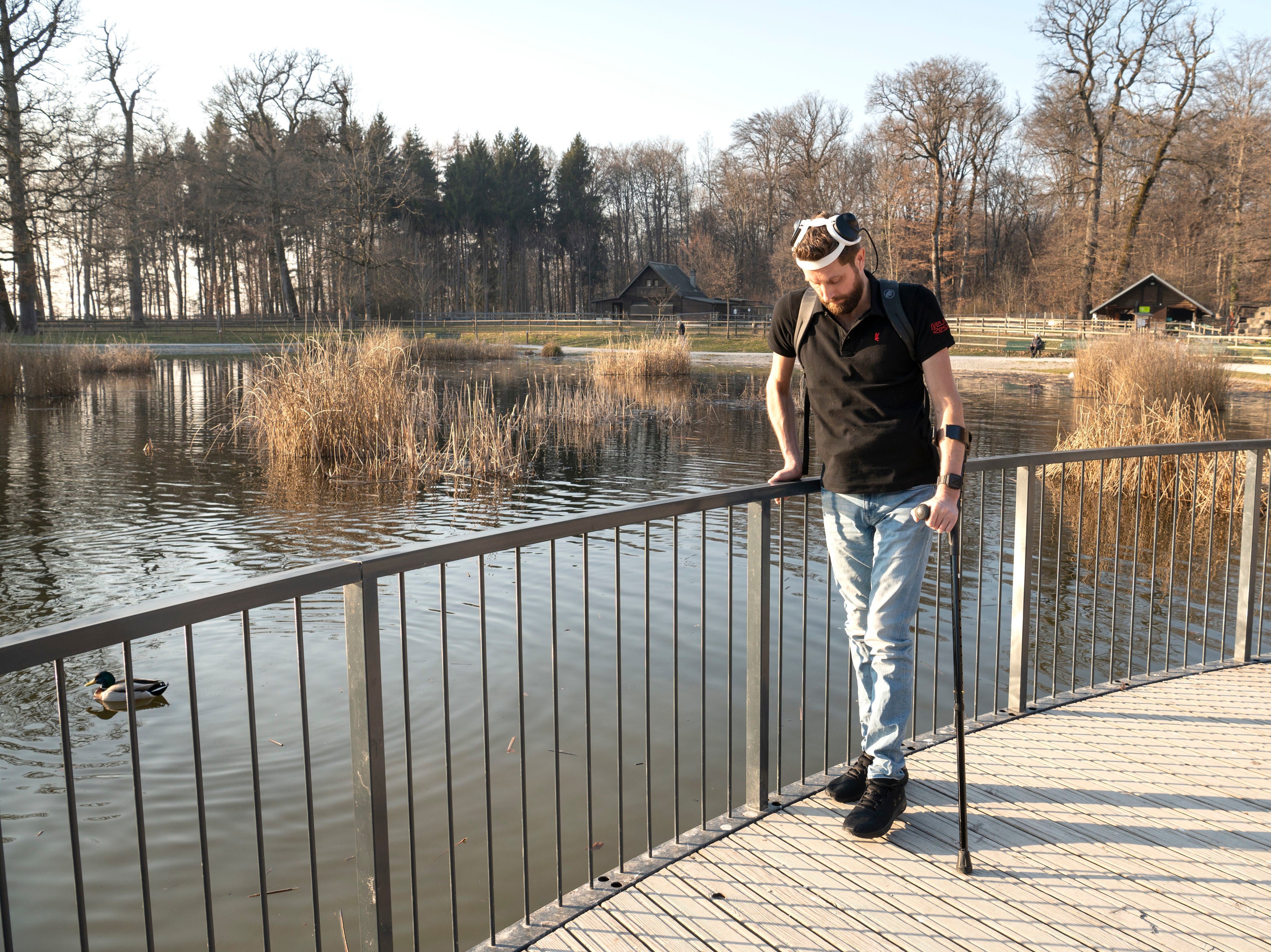Groundbreaking implants allow paralysed man to walk again in historic first
The implants reconnect the brain and the spinal cord

Your support helps us to tell the story
From reproductive rights to climate change to Big Tech, The Independent is on the ground when the story is developing. Whether it's investigating the financials of Elon Musk's pro-Trump PAC or producing our latest documentary, 'The A Word', which shines a light on the American women fighting for reproductive rights, we know how important it is to parse out the facts from the messaging.
At such a critical moment in US history, we need reporters on the ground. Your donation allows us to keep sending journalists to speak to both sides of the story.
The Independent is trusted by Americans across the entire political spectrum. And unlike many other quality news outlets, we choose not to lock Americans out of our reporting and analysis with paywalls. We believe quality journalism should be available to everyone, paid for by those who can afford it.
Your support makes all the difference.A paralysed man has become the first in history to regain his natural mobility through the use of implants, according to a new study.
Gert-Jan Oskam was paralysed in 2011 after a motorcycle accident in China. He lost control of his limbs from his hips down, but thanks to a newly-developed device linking his thoughts to his spinal cord he can walk once again.
A study outlining the new tech was published in the journal Nature. The Swiss researchers who developed the tech describe it as a "digital bridge" between the patient's brain and spinal cord, bypassing the injured areas of his body.
Mr Oskam has been walking with the implants for more than a year, with no sign of the connection breaking down, according to the New York Times.
“For 12 years I’ve been trying to get back my feet,” Mr Oskam said Tuesday in a press briefing. “Now I have learned how to walk normal, natural.”
Not only is Mr Oskam walking again, but he is showing signs of actual neurological recovery thanks to the implants — even if the implant is deactivated, Mr Oskam can still walk using crutches.
When a person suffers a traumatic spinal cord injury, it can sever the communication between the brain and the region of the spine that controls walking, rendering a person paralyzed.
The new implants re-establish that connection by bypassing trouble spots.
Grégoire Courtine, who helped lead the implant research and who serves as a spinal cord specialist at the Swiss Federal Institute of Technology, Lausanne, said the implants have "captured the thoughts of Gert-Jan, and translated these thoughts into a stimulation of the spinal cord to re-establish voluntary movement."

If that sounds like fanciful speculative fiction, the neuroscientist who placed Mr Oskam's implants would have agreed — until she saw the results.
"It was quite science fiction in the beginning for me, but it became true today," Jocelyne Bloch, the University of Lausanne neuroscientist who placed the implant, said.
The latest breakthrough comes after years of advances in treatments for spinal cord injuries.
In 2016, a group of researchers — led by Dr Courtine — restored the ability to walk in paralyzed monkeys. Another helped a man with a crippled hand regain control over his fingers.
Two years later, Dr Courtine led another group of scientists who formulated a way to stimulate the brain using electrical-pulse generators. It allowed individuals with partial parlysation to walk and ride bicycles again. Then, last year, advancements on that technology allowed paralysed individuals to swim, walk, and cycle within a single day of treatment.



Join our commenting forum
Join thought-provoking conversations, follow other Independent readers and see their replies
Comments